Replacement Front Doors and Entry Doors
Your home’s entry door is more than just a focal point; it provides security and protection from the elements. Omega Doors and Locks offers custom entry doors crafted from the highest quality materials, ensuring durability and energy efficiency. Our doors help reduce your utility bills and maintain a comfortable indoor temperature throughout the year.
We offer a variety of materials and designs for our custom entry doors, including smooth steel, textured steel, and fiberglass. Personalize your door with 16 designer color options, different panel patterns, glass choices, and hardware. Whether you’re looking for front doors with sidelights, a specific design, or the elegance of French doors, we can create and install a door that perfectly matches your home’s style. Want to enjoy fresh air without letting in bugs? Add one of our screen doors for the perfect blend of form and function.
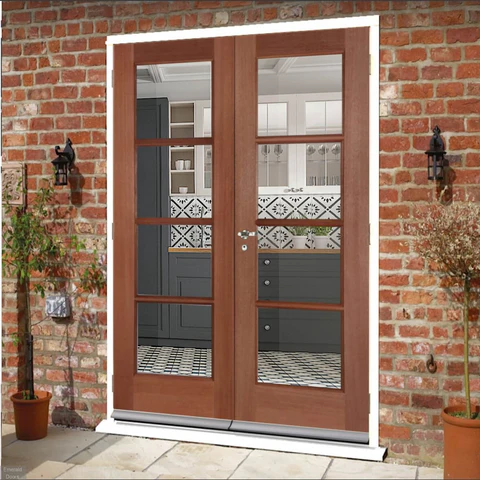
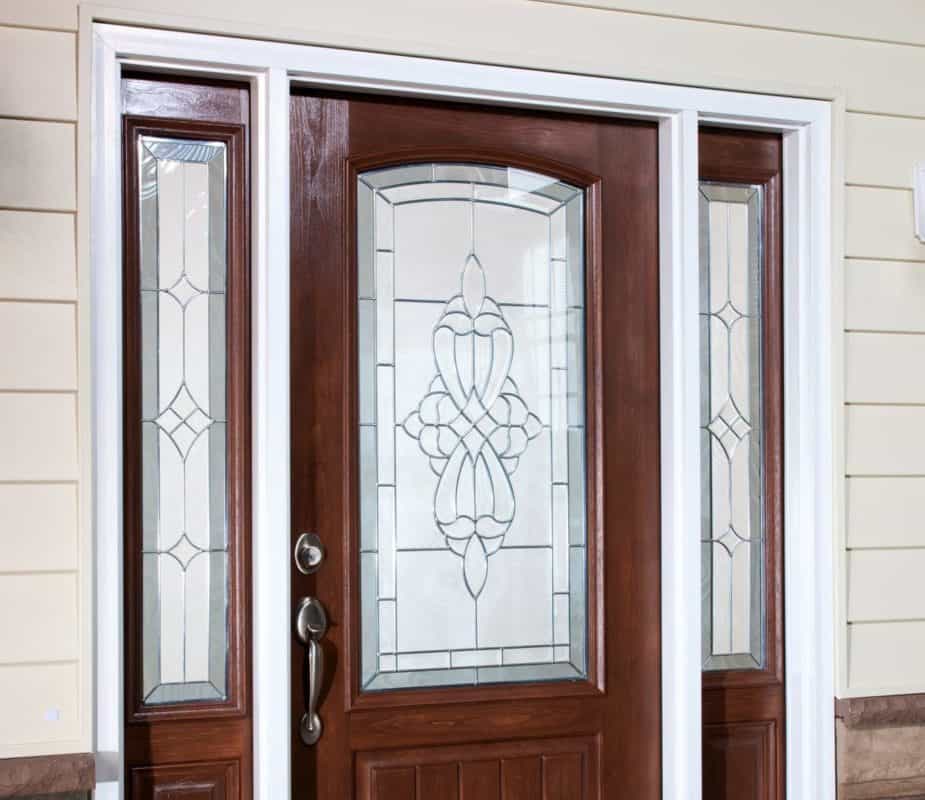
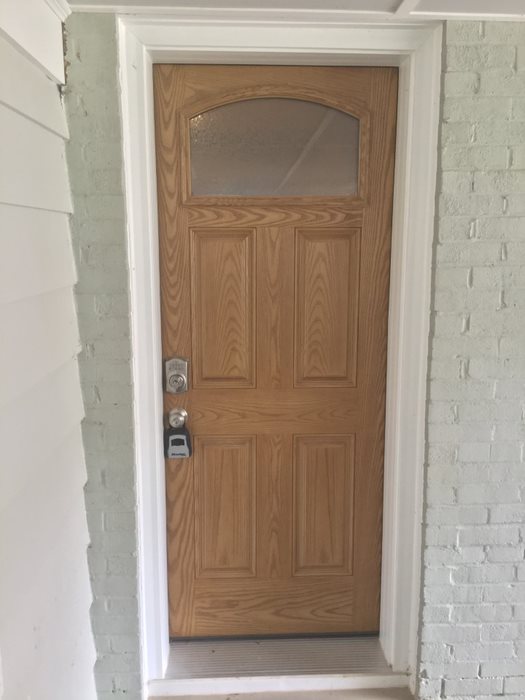
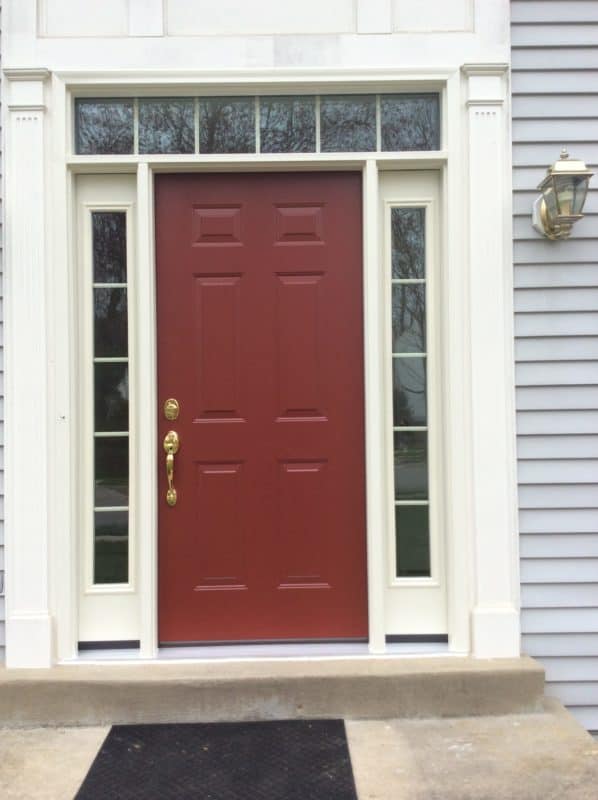
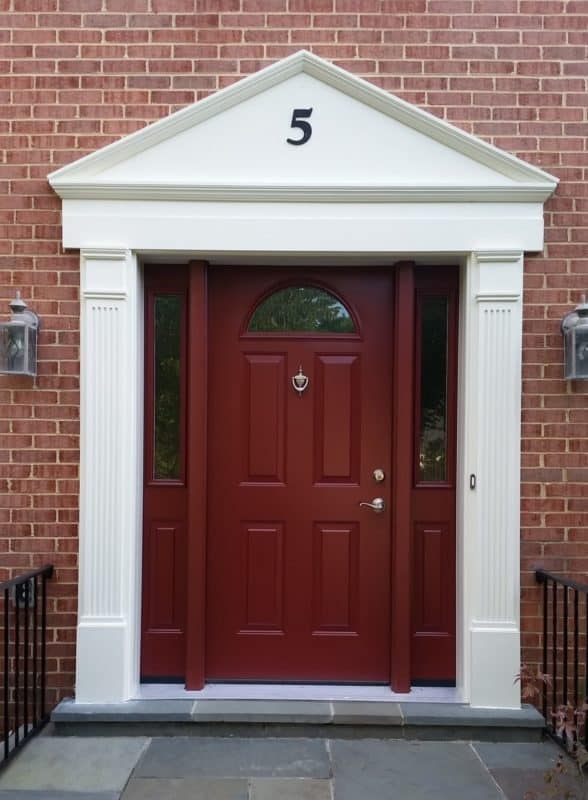
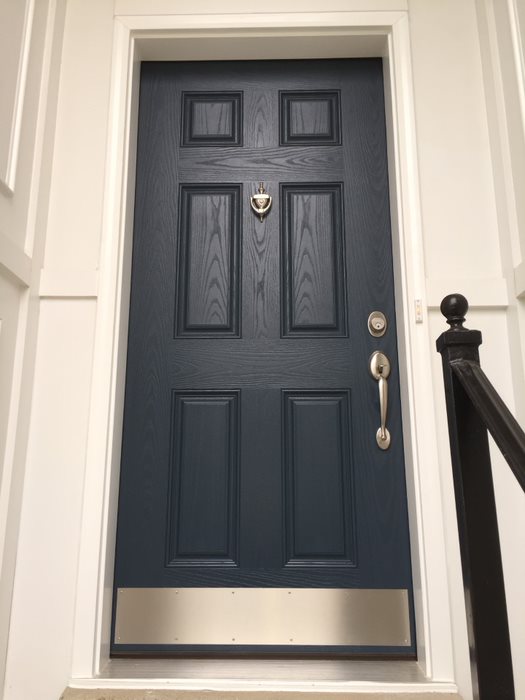
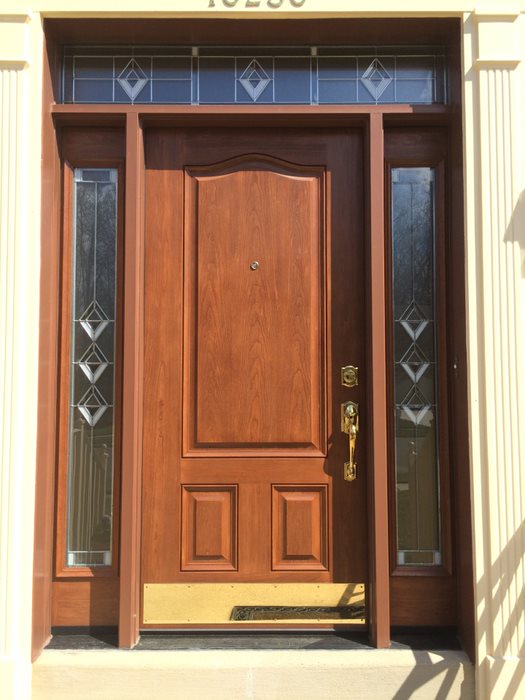
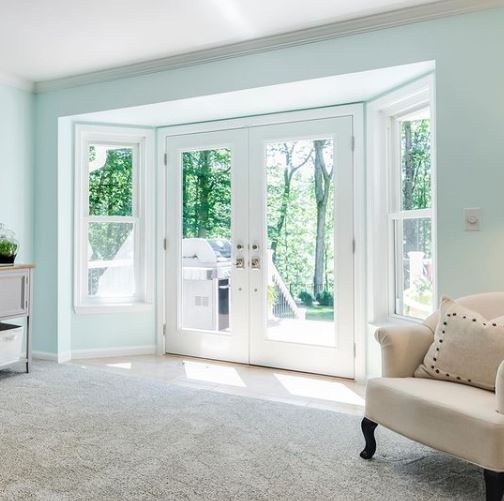
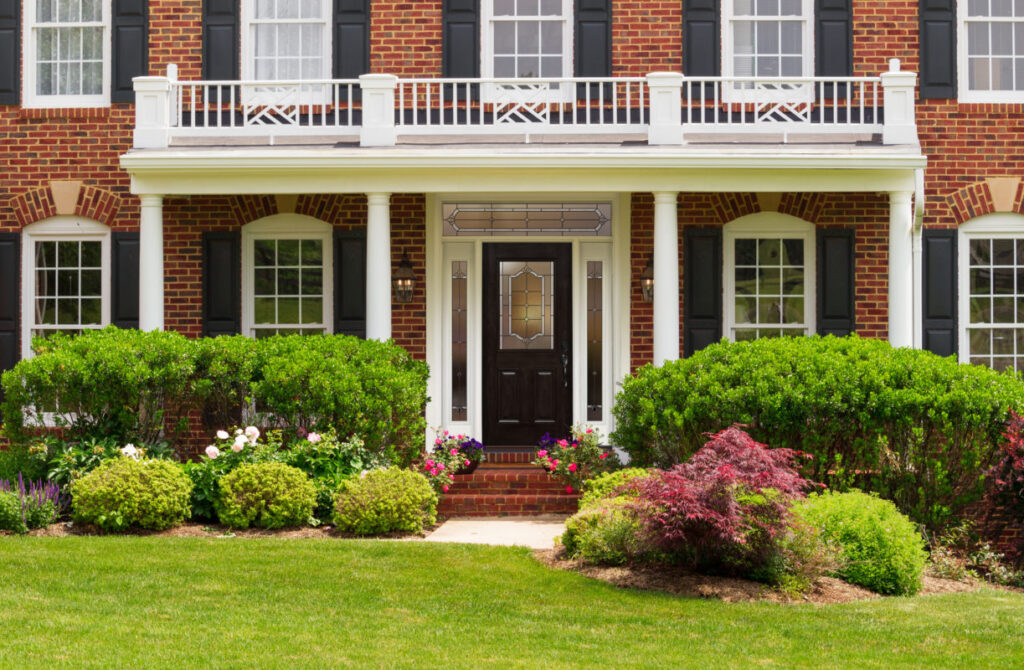
Types, Pro & Con To Consider When Choosing A Front/Entry Doors
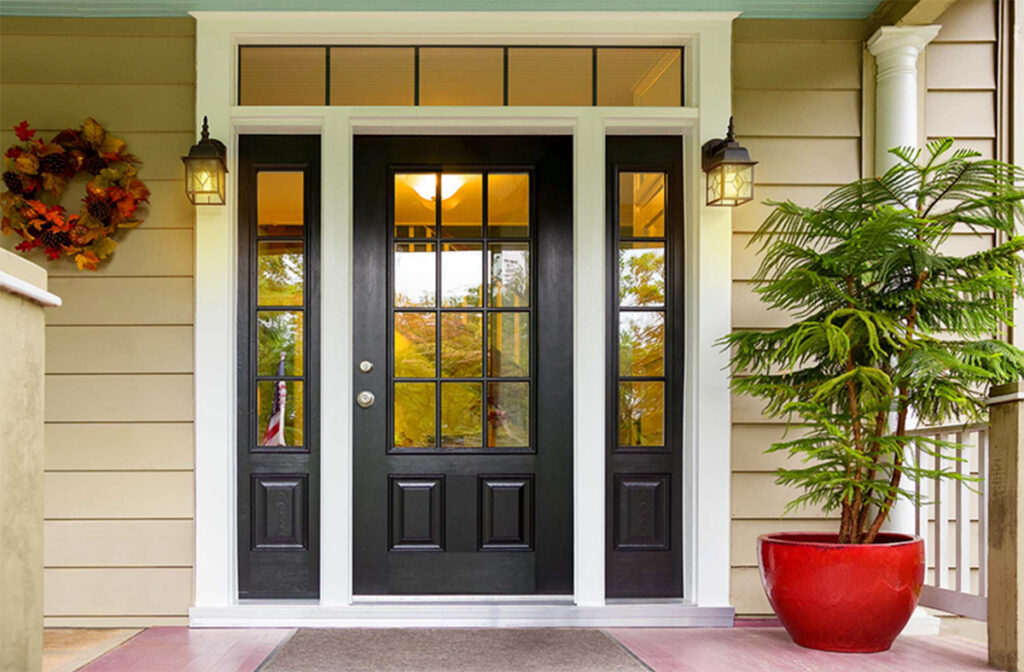
Steel Entry Doors
Steel doors are a popular option for homeowners seeking bold color options, exceptional durability, or both. Available in smooth or textured finishes, they are more affordable than fiberglass and significantly less expensive than most wooden doors. Here are some of the primary pros and cons of steel doors to help you decide if they’re the right fit for your home.
Pros
Affordability: Among the three most popular materials for entry doors—wood, fiberglass, and steel—steel is the most affordable option.
Durability: Steel doors are extremely durable and resistant to cracking and warping. They can withstand harsh weather conditions, making them a reliable choice for exterior doors.
Security: Steel doors provide excellent security, as they are difficult to break through. This added layer of protection can give homeowners peace of mind.
Energy Efficiency: Many steel doors are insulated with a foam core, which enhances their energy efficiency. This helps maintain your home’s internal temperature and can reduce energy costs.
Low Maintenance: Steel doors require minimal maintenance compared to wooden doors. They are less likely to need frequent refinishing or repairs.
Variety: Available in a wide range of colors and styles, steel doors can be customized to match the aesthetic of your home.
Cons
Susceptible to Dents: While steel doors are strong, they can dent if subjected to heavy impact. Repairing dents in steel can be more challenging than in wood or fiberglass.
Rust: If the door’s paint or finish becomes damaged, the steel can rust over time, especially in areas with high humidity or salt exposure.
Temperature Conductivity: Steel can become hot or cold to the touch depending on the weather, which might not be ideal in extreme climates.
Limited Customization: While there are many styles and colors available, steel doors offer fewer customization options compared to wooden doors.
Weight: Steel doors are heavier than fiberglass or wooden doors, which can make them more challenging to install and may require stronger frames and hinges.
By weighing these pros and cons, you can determine if a steel door is the right choice for your home, balancing cost, security, and maintenance needs against potential drawbacks.
Fiberglass Entry Doors
any homeowners choose fiberglass doors for the high-end look and versatility they offer, with a price point that’s typically in the mid-range between steel and wood. There truly aren’t many cons to the material, unless price is your primary concern. Here are some of the key pros and cons of fiberglass doors to help you decide if they’re the right fit for your home.
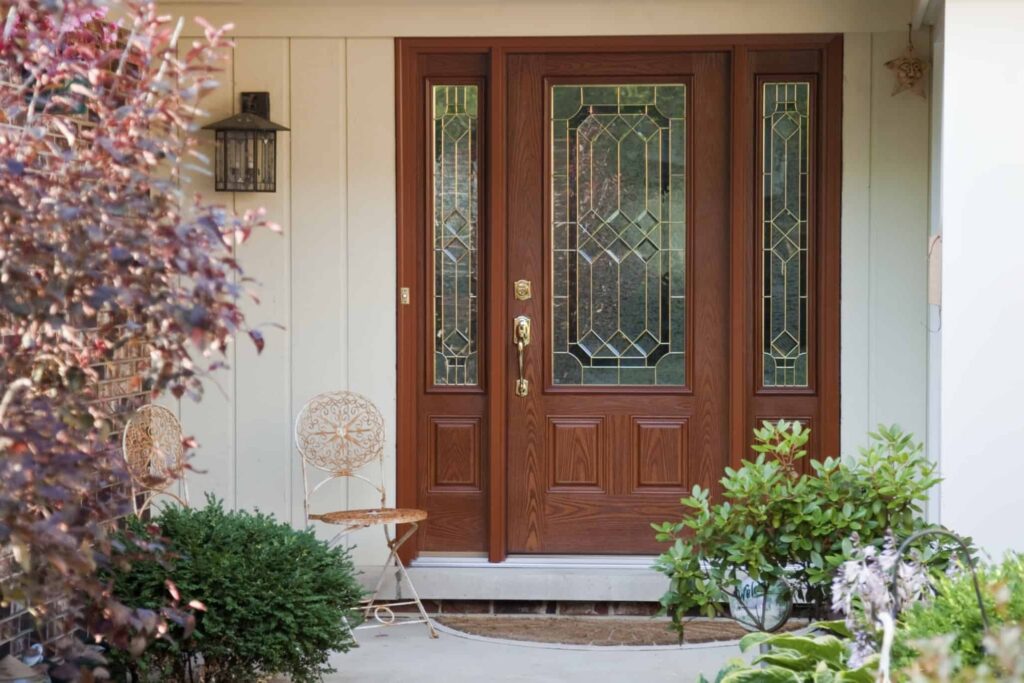
Pros
Wood-Look: Unlike steel doors, which can have a more industrial appearance, fiberglass doors mimic the look of real wood without the high maintenance. You can choose from a beautiful selection of light and dark finishes or opt for paint to match your style.
Durability: Fiberglass doors are highly durable and resistant to dents, scratches, and warping. They can withstand harsh weather conditions and maintain their appearance over time.
Energy Efficiency: Many fiberglass doors are designed with an insulated core, which enhances their energy efficiency. This helps to maintain your home’s internal temperature and can reduce energy costs.
Low Maintenance: Fiberglass doors require minimal upkeep. They don’t need to be refinished as frequently as wooden doors and are resistant to rot, rust, and corrosion.
Versatility: Available in a wide variety of styles, finishes, and colors, fiberglass doors can be customized to suit any home’s aesthetic. Whether you prefer a classic or modern look, there’s a fiberglass door to match.
Security: Fiberglass doors offer good security, with many models featuring reinforced cores and high-quality locking mechanisms.
Lightweight: Compared to steel and wood, fiberglass doors are lighter, making them easier to install and less demanding on door frames and hinges.
Cons
Cost: While not as expensive as solid wood doors, fiberglass doors are typically more costly than steel doors. This might be a consideration if you’re on a tight budget.
Less Authenticity: Although fiberglass doors can mimic the look of wood, they may not fully capture the natural variations and warmth of real wood, which might be important to some homeowners.
Susceptibility to Cracking: In extreme conditions, fiberglass doors can crack, especially if they are of lower quality or not properly maintained.
By evaluating these pros and cons, you can determine if a fiberglass door is the right choice for your home, balancing the need for aesthetic appeal, durability, and maintenance against potential cost considerations.

Wood Entry Door
Wood entry doors have long been a popular choice for homeowners due to their timeless beauty and versatility. They can add a touch of elegance and warmth to any home while offering a range of customization options. Here’s a closer look at the benefits and drawbacks of wood entry doors to help you decide if they are the right fit for your home.
Pros
Aesthetic Appeal:
- Natural Beauty: Wood doors offer a classic, natural beauty that enhances the curb appeal of any home. The grain patterns and natural variations in the wood give each door a unique look.
- Variety: Available in numerous wood types such as oak, mahogany, cherry, and walnut, each offering different colors, textures, and finishes.
- Customizable: Wood doors can be easily customized with different designs, carvings, panel styles, and glass inserts. They can be stained or painted to match any home’s aesthetic.
Insulation:
- Energy Efficiency: Wood is a natural insulator, helping to keep your home warm in the winter and cool in the summer. Many wood doors are also constructed with additional insulating cores for improved energy efficiency.
Durability:
- Strength: High-quality wood doors are strong and sturdy, providing good security and durability. With proper maintenance, they can last for many years.
Sound Insulation:
- Noise Reduction: The density of wood provides excellent sound insulation, helping to keep external noise out of your home.
Cons
Maintenance:
- Regular Upkeep: Wood doors require regular maintenance to protect them from the elements. This includes periodic painting or staining and sealing to prevent moisture damage, warping, and rotting.
- Weather Sensitivity: Wood can expand and contract with changes in temperature and humidity, potentially causing issues with fit and finish over time.
Cost:
- Higher Price: Wood doors are generally more expensive than steel and fiberglass options. The cost can vary widely depending on the type of wood and the level of customization.
Durability Issues:
- Susceptible to Damage: Wood doors can be prone to scratches, dents, and other damage from everyday use and environmental factors.
- Pests: Wood can be vulnerable to pest infestations, such as termites, if not properly treated and maintained.
Can’t Find What You Are Looking For?
Frequently Asked Questions
How long does front door installation take?
The time it takes to install a front door varies, but front door installation can actually be done in just a few hours without compromising our standard of precision and professionalism.
What materials should I consider when buying a new front door?
Many entry and sliding doors (and their frames) are made from wood. Wood doors require regular maintenance, including fresh paint every three to five years. Furthermore, wood doors expand and contract with seasonal changes, resulting in gaps and drafts – which impact your energy costs.
At Omega doors an locks, we recommend fiberglass, steel or vinyl doors as the best materials for front doors. They require little-to- no maintenance and prevent warping and drafts – making the door more energy efficient.
Are all front doors equal in terms of quality?
No matter what the material, builder-grade doors are less energy efficient and more susceptible to the elements. Over time, you’ll see the effects of UV rays, including fading, cracking and erosion. At Omega doors and locks, we believe that the best front doors use the highest-grade materials available so that your new door will stand up to time and the Mid-Atlantic weather.
How much does it cost to replace a front door?
Depending on your selection, the front door replacement costs vary. Every project is different, so it’s important to contact a professional like us to determine the cost to install entry doors.
How to buy a front door
Looking to learn more about how to buy a front door? we can help. Selecting the right entry door for your house doesn’t have to be overwhelming. In fact, it can be a fun and rewarding process. Our team can help you select from an assortment of front door options – we’ll work with you to select the hardware and colors that suit your home best. To learn more about our selection of front entry doors and custom design services, contact us and we’ll be in touch with more information.
